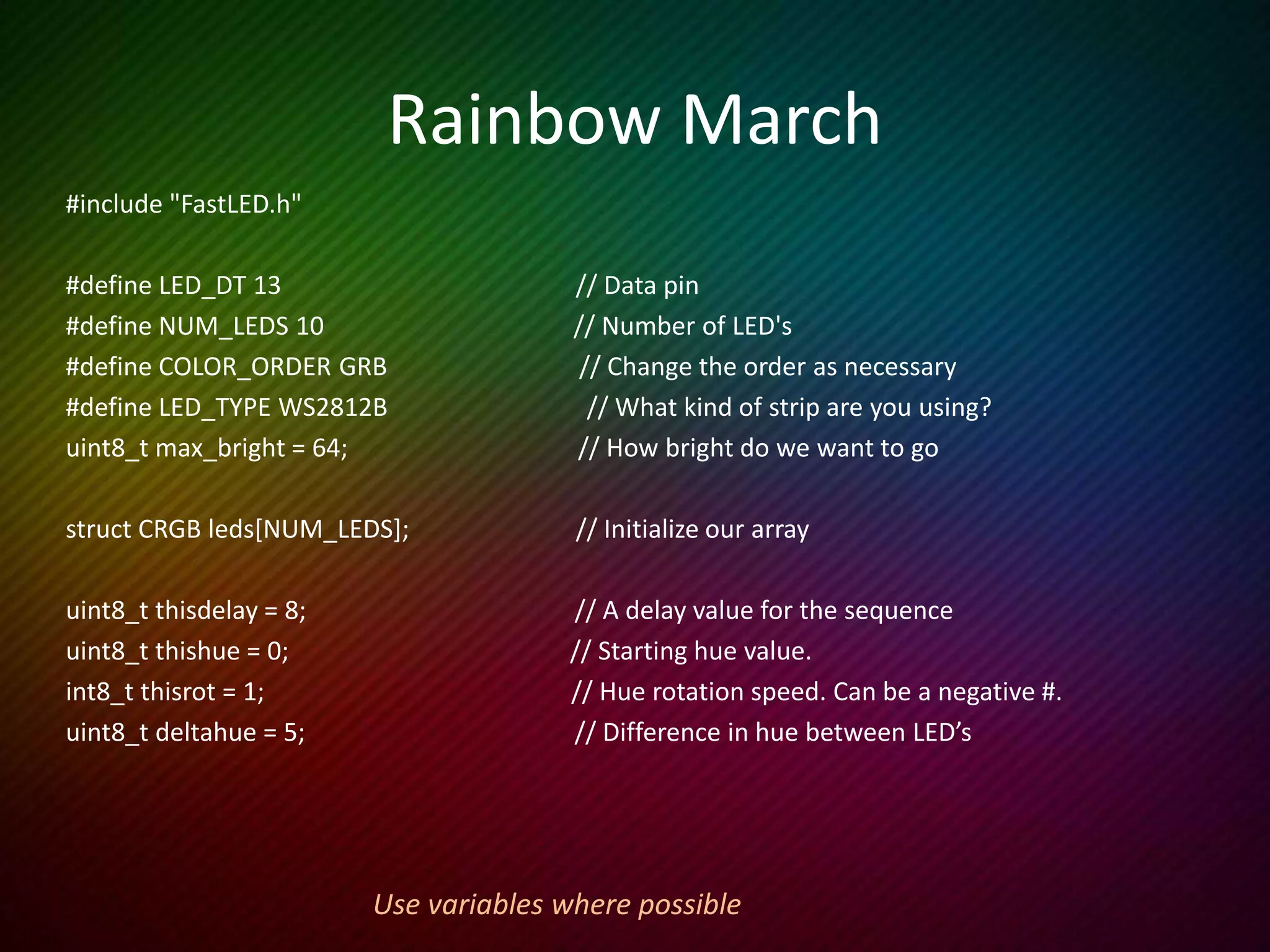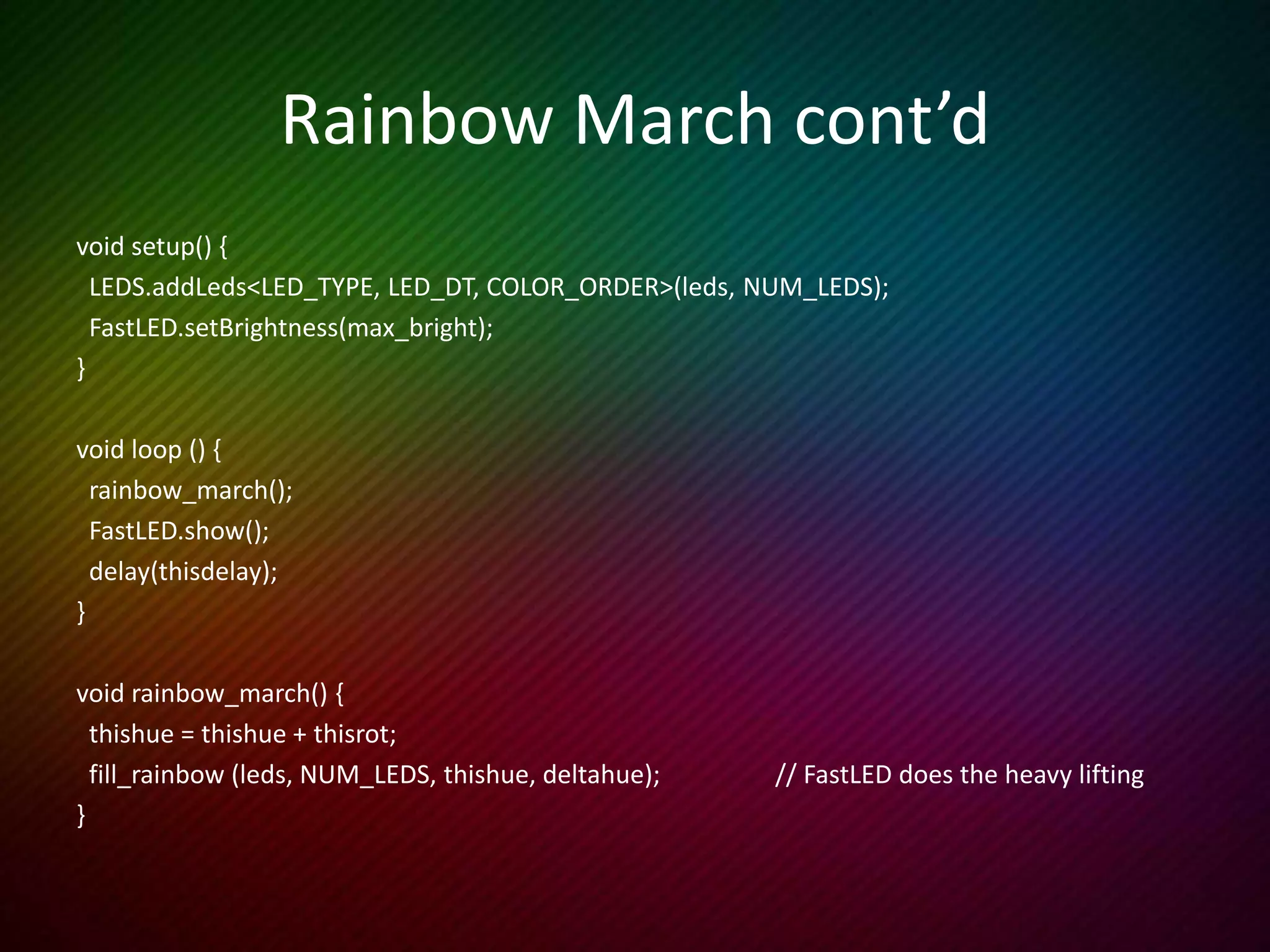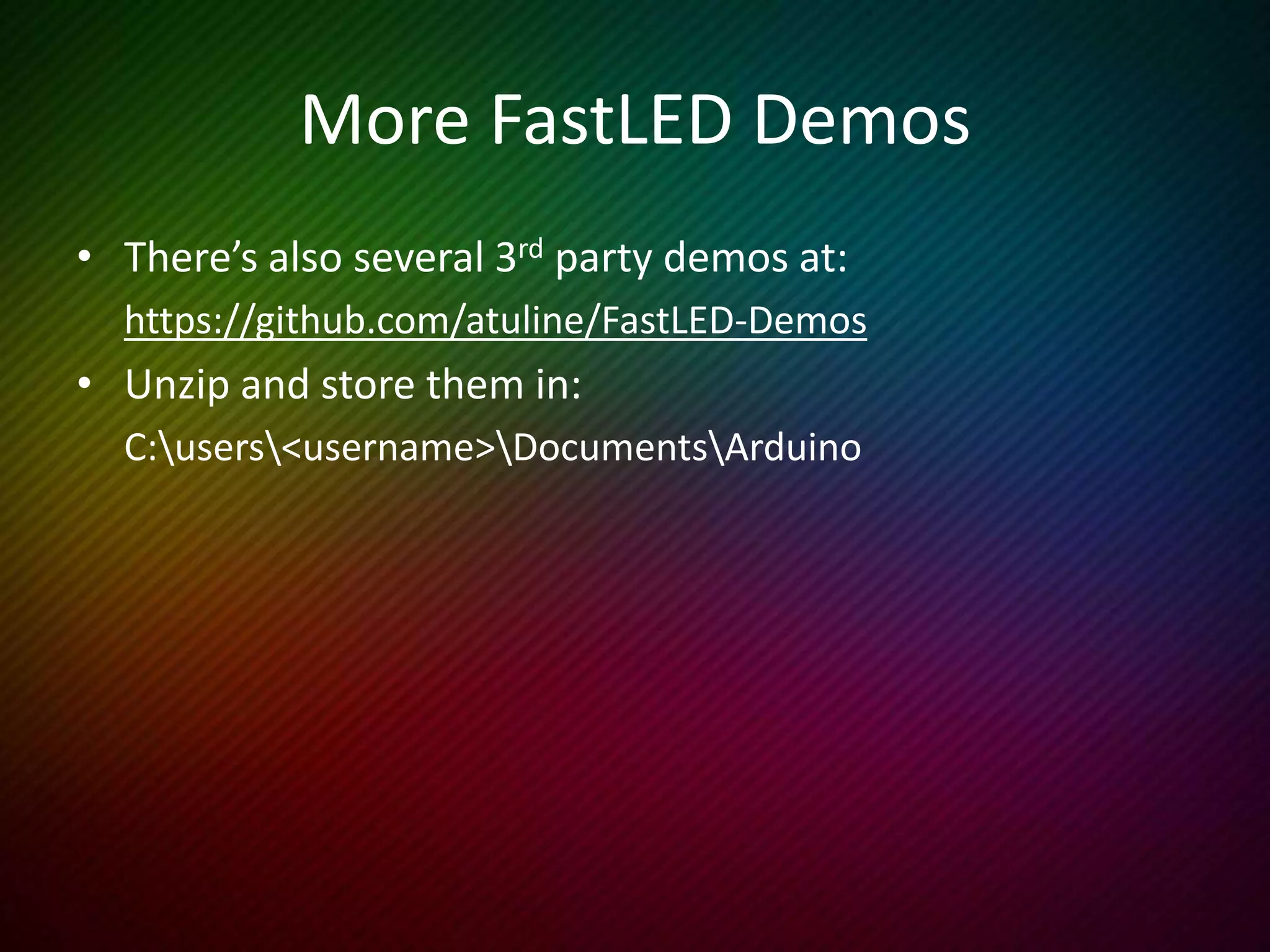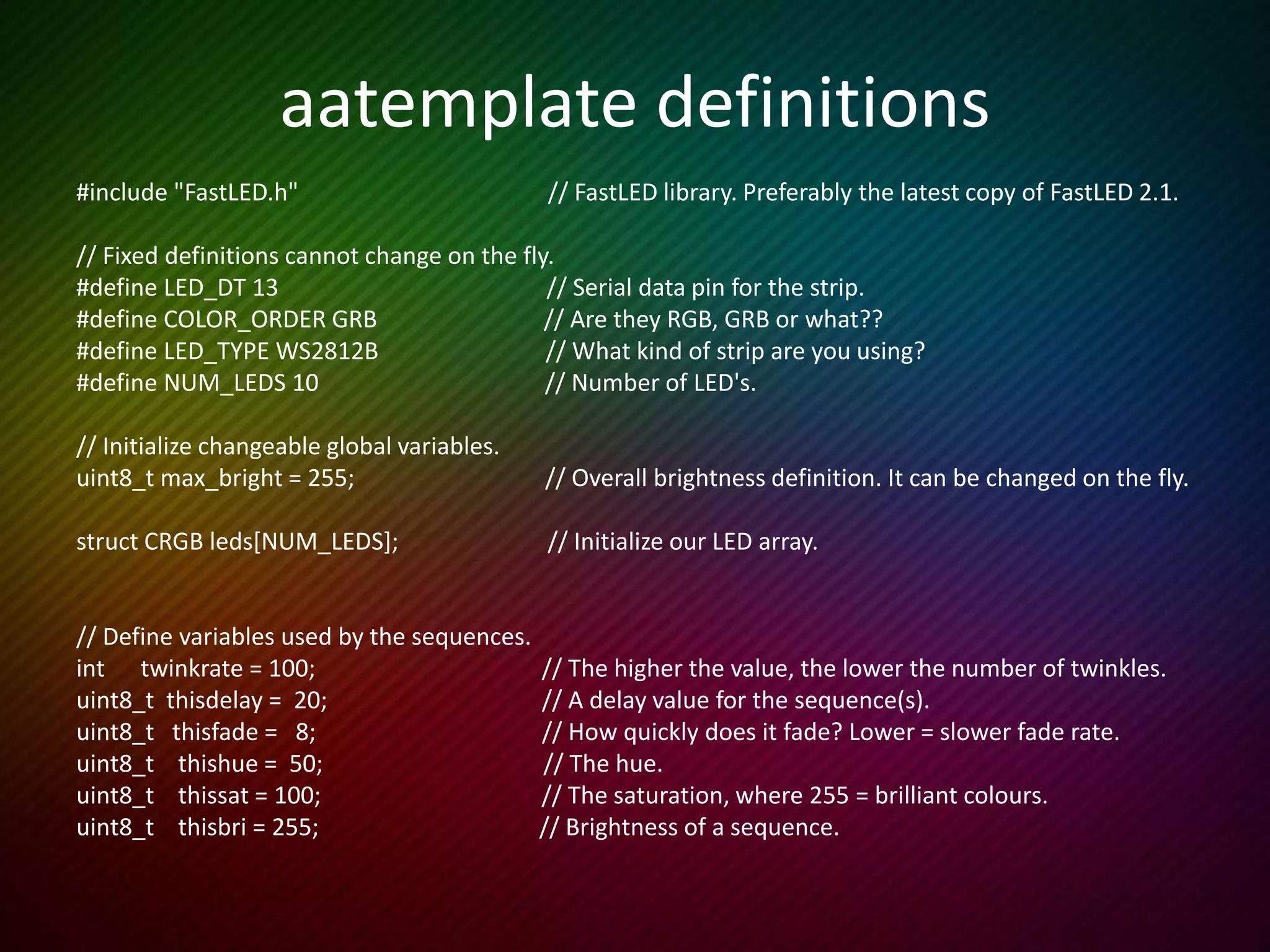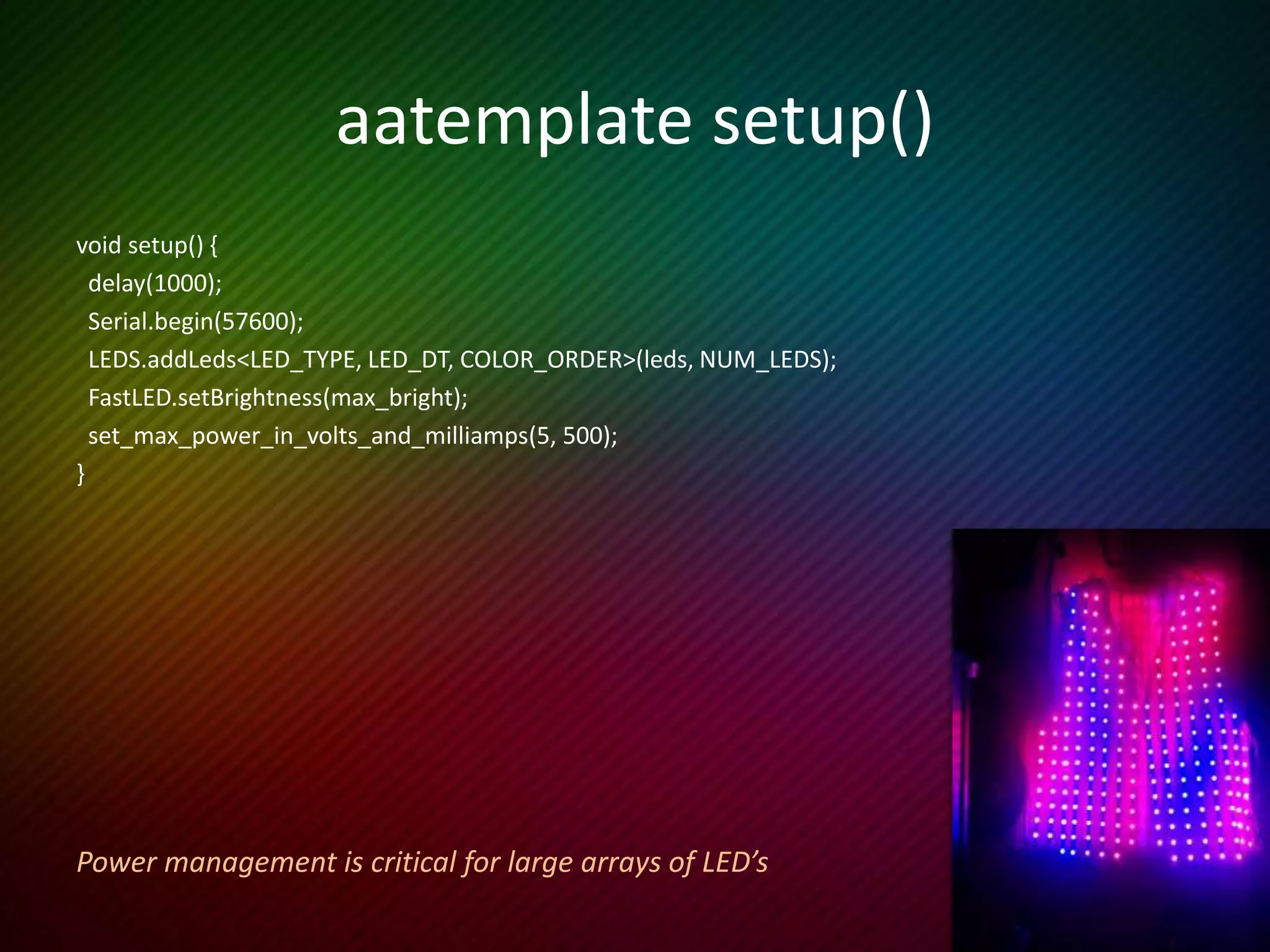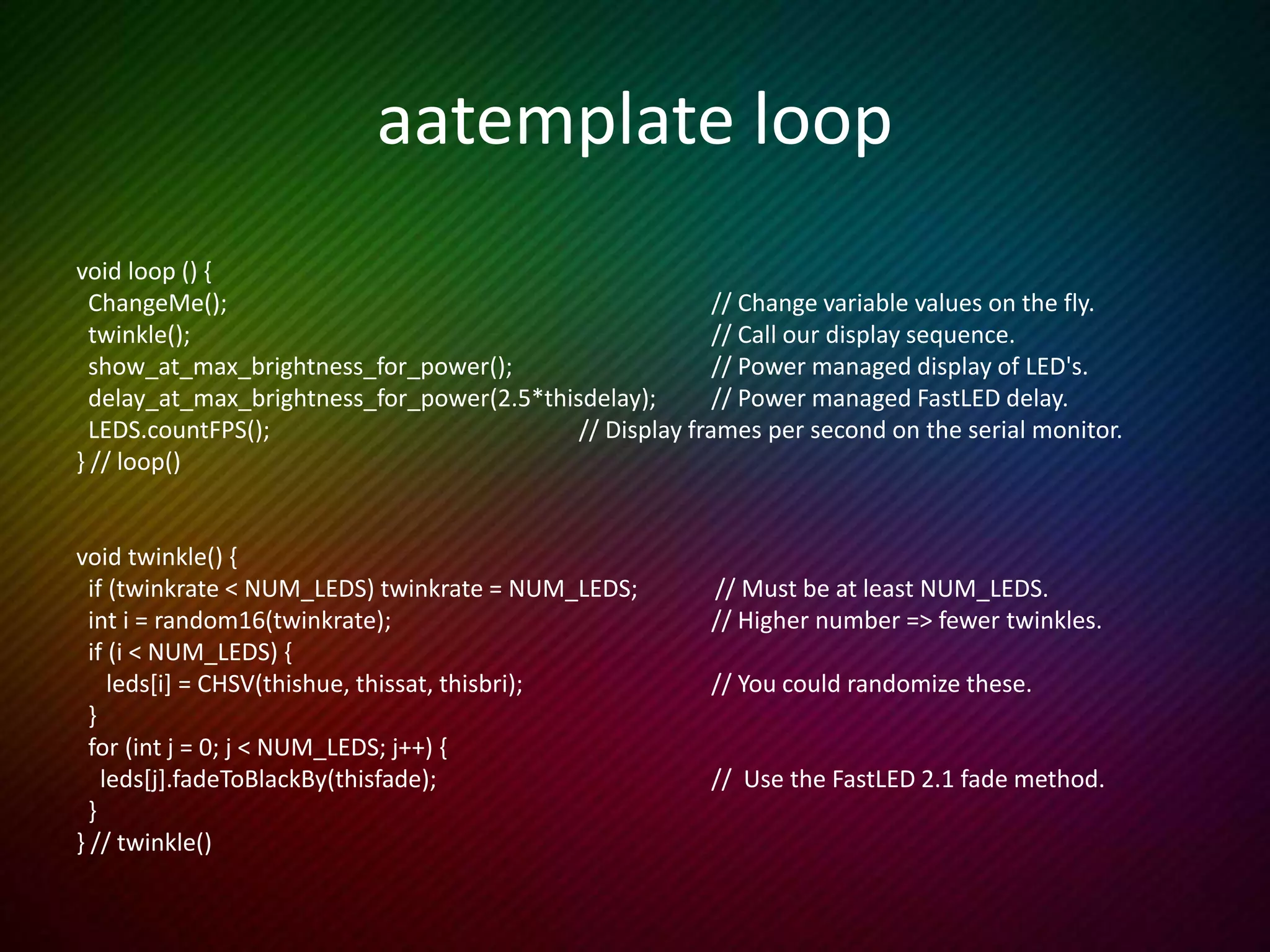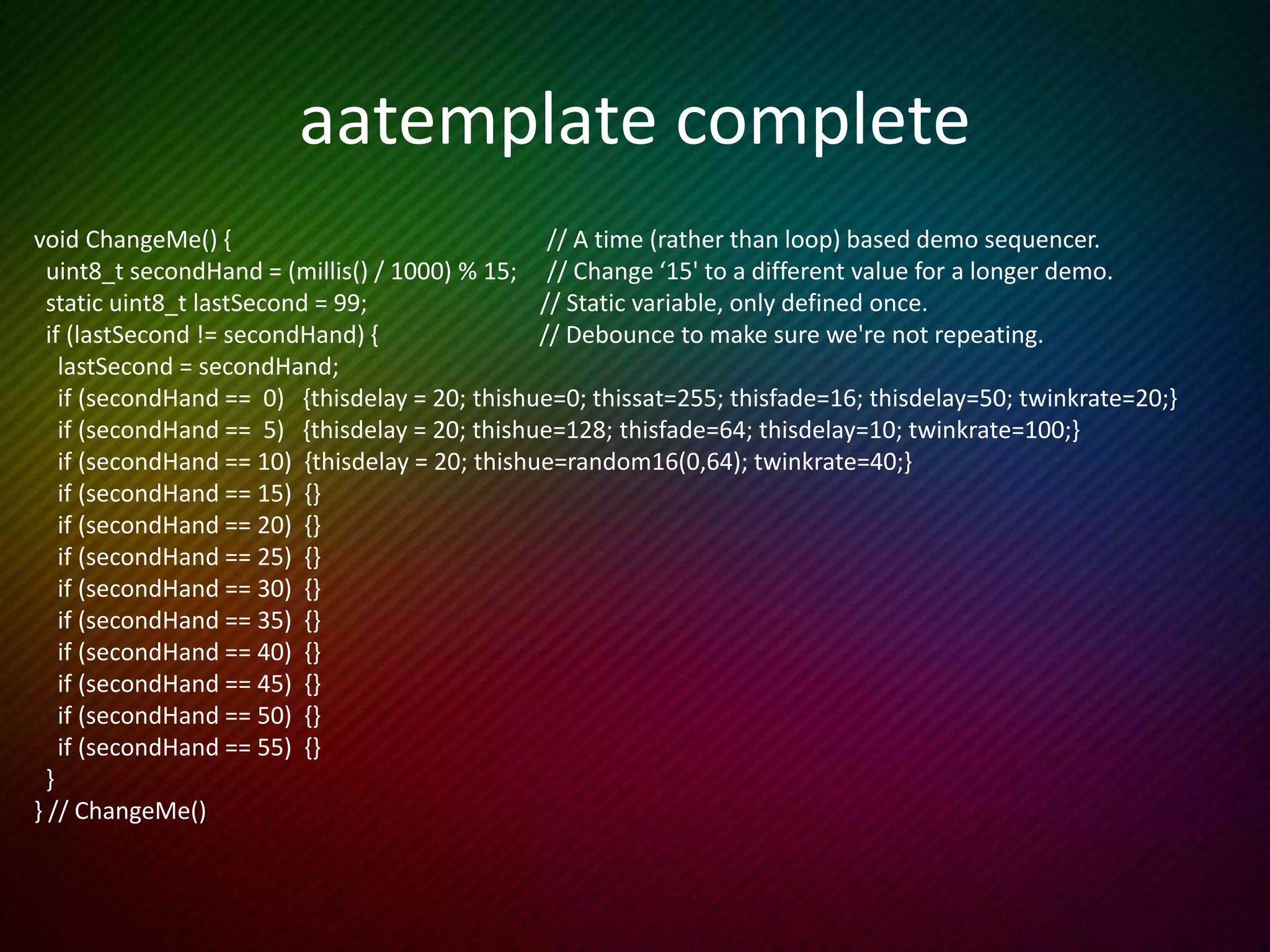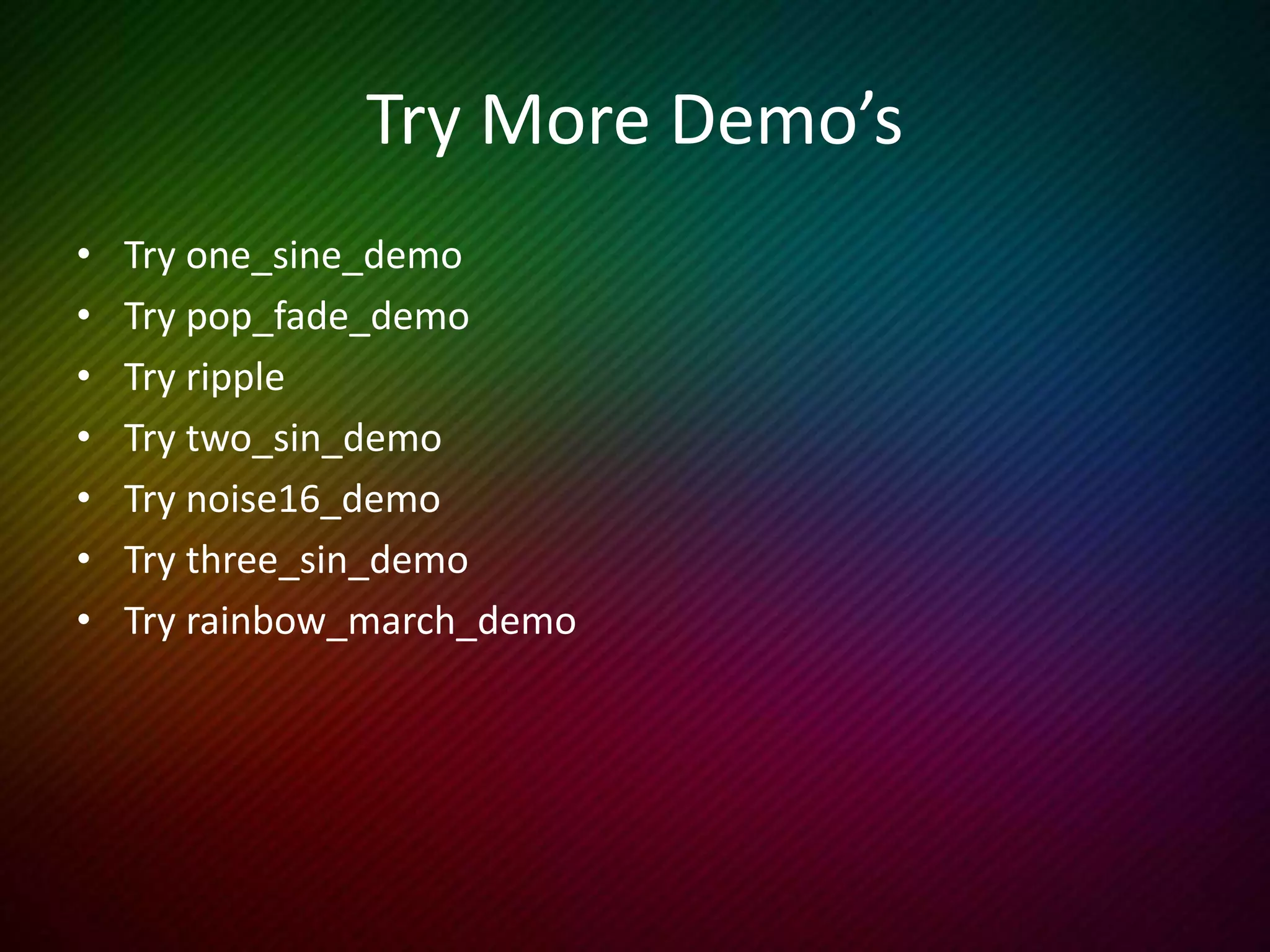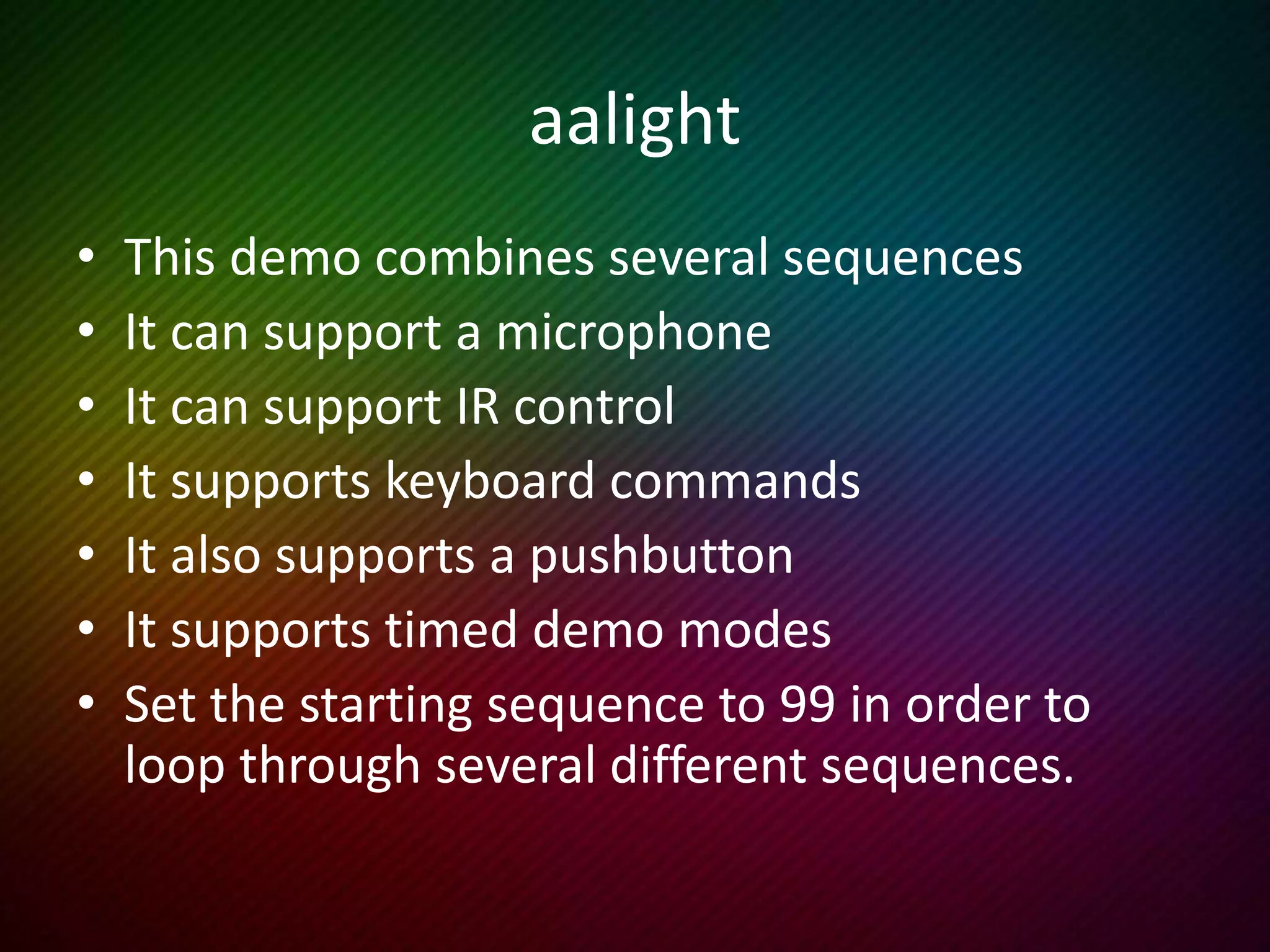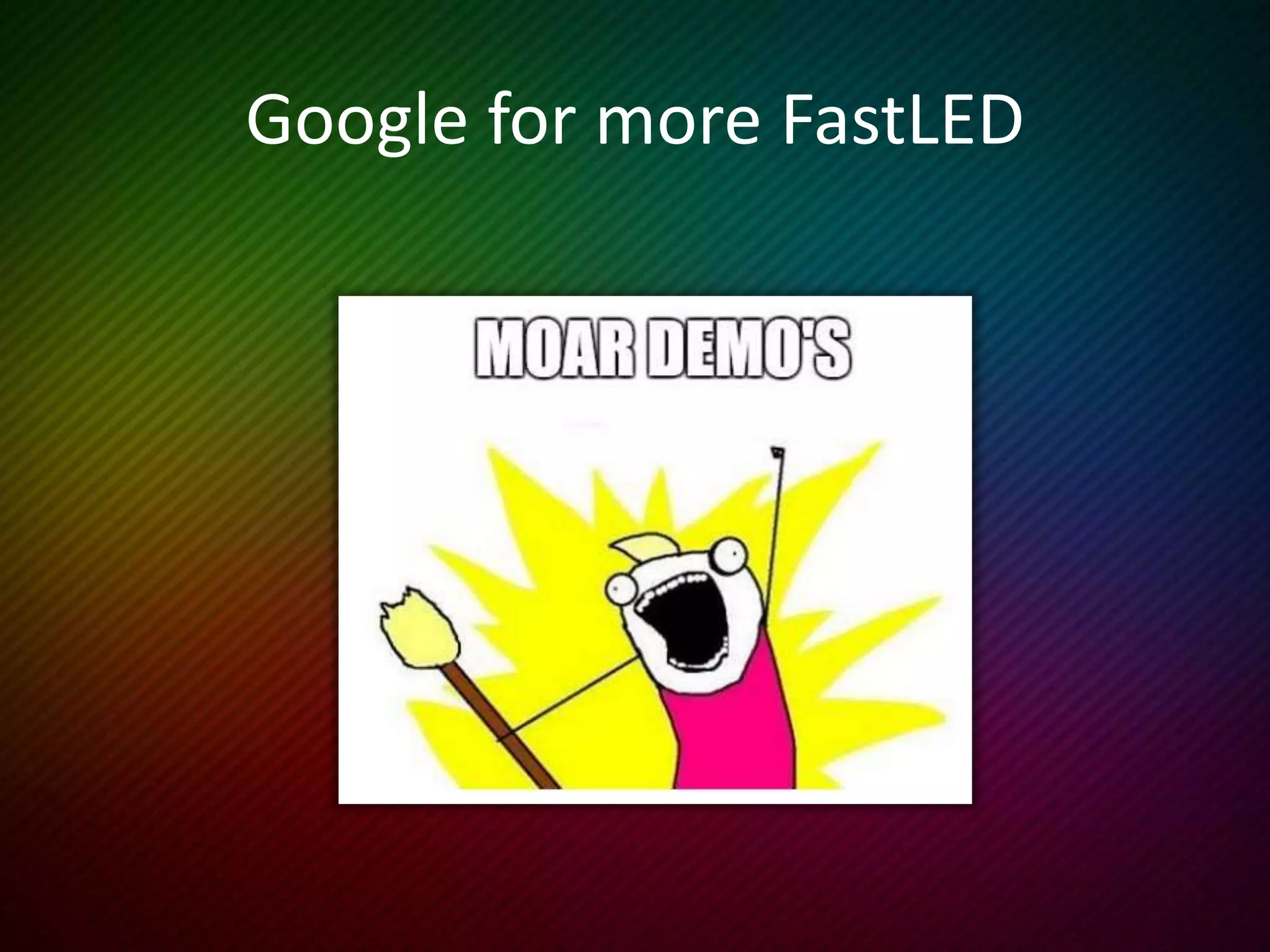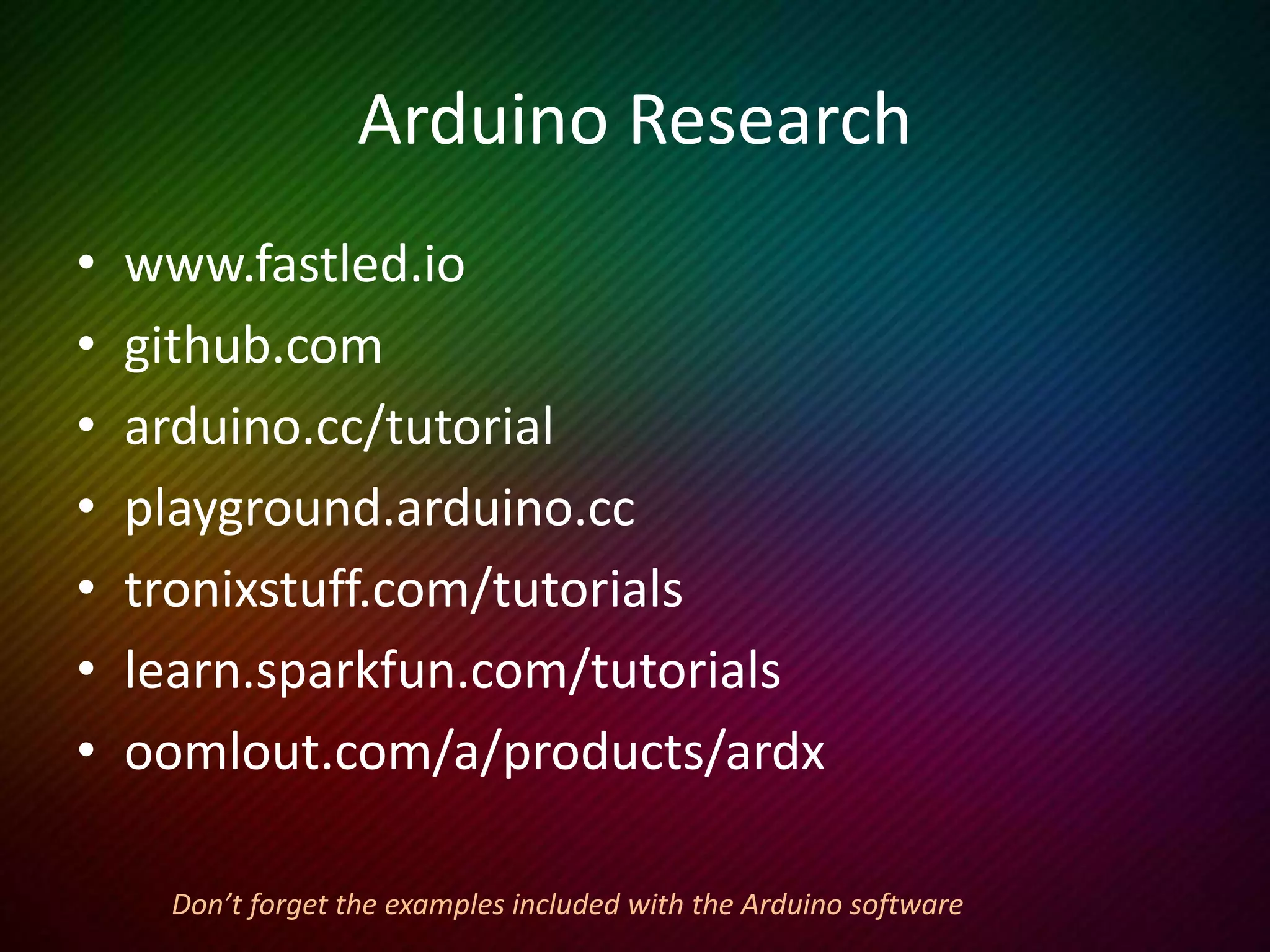This document provides a comprehensive guide on programming addressable LED strips using an Arduino Nano and the FastLED library. It includes installation instructions, sample code, and explanations for controlling LED behavior, as well as resources for further learning and inspiration. The workshop encourages collaboration and individual projects, utilizing the capabilities of FastLED for creative lighting applications.
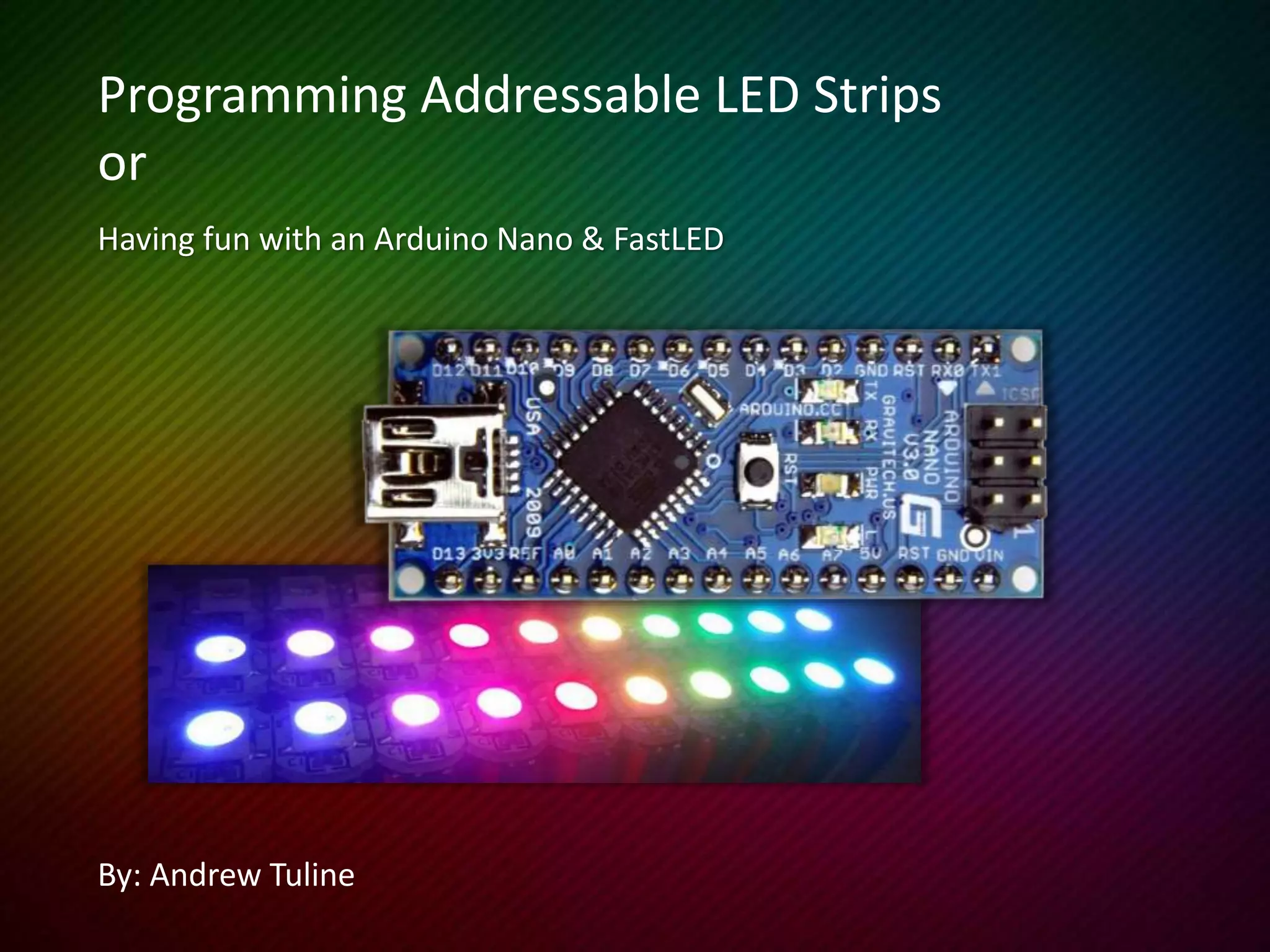
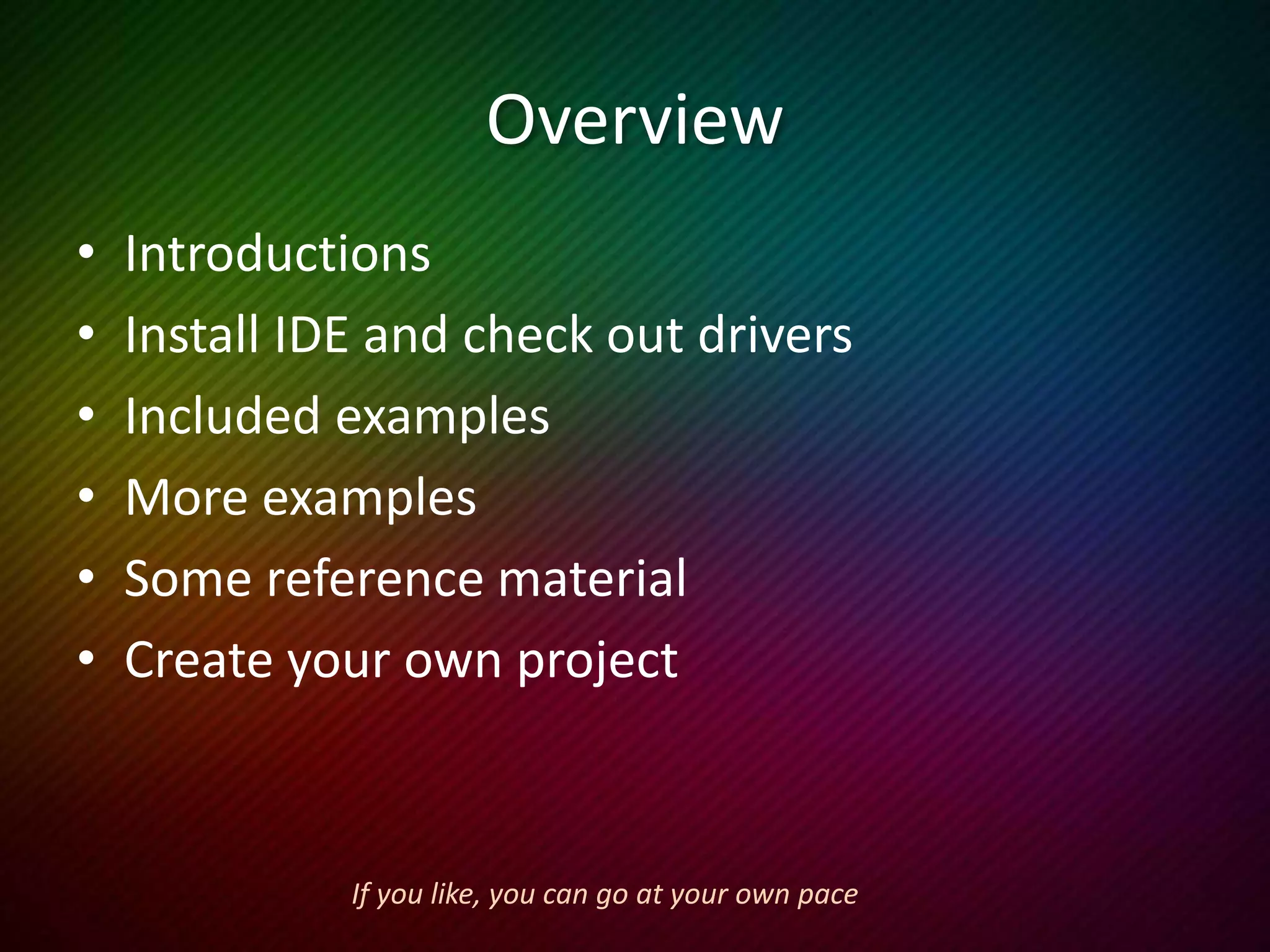
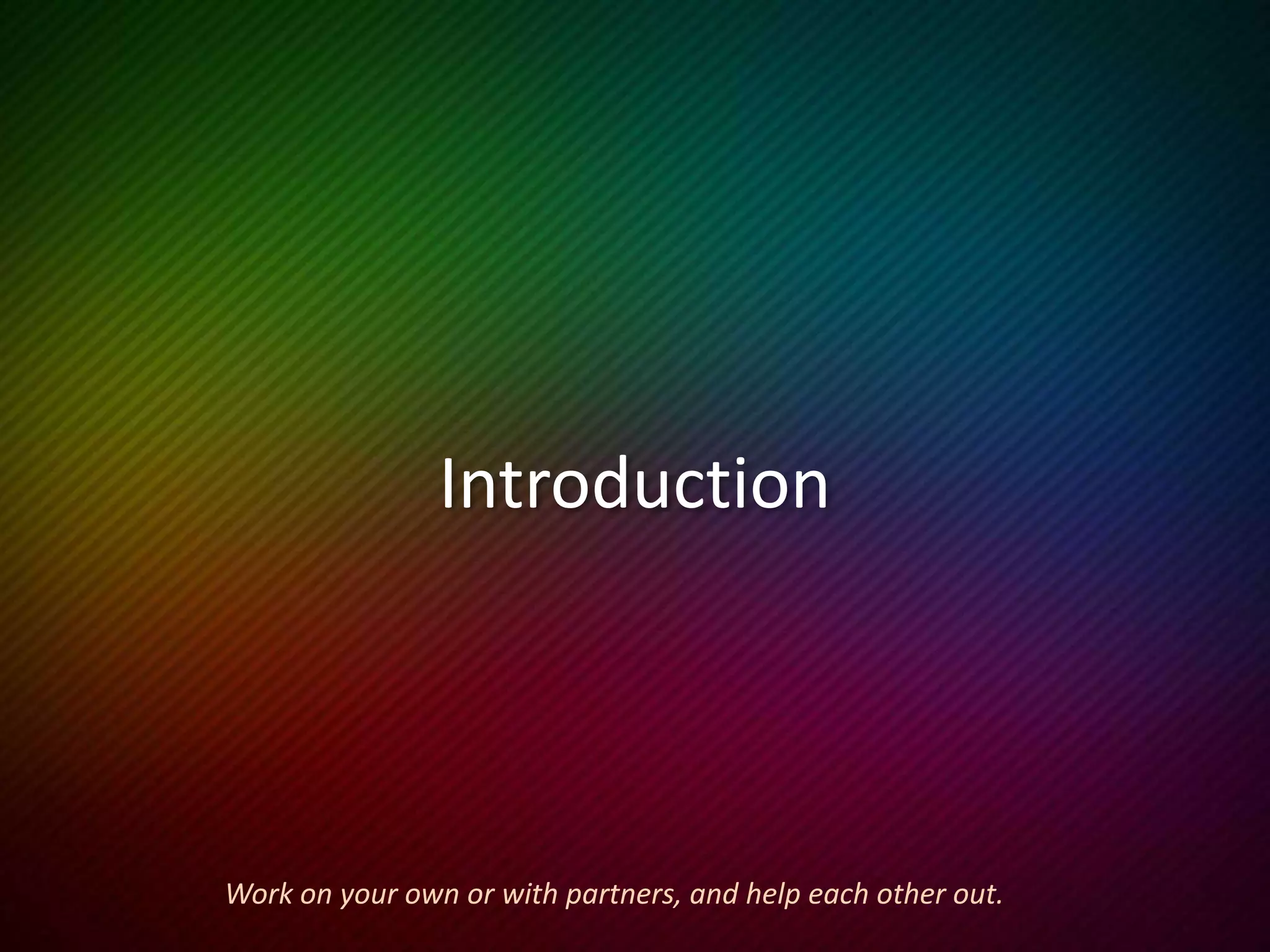
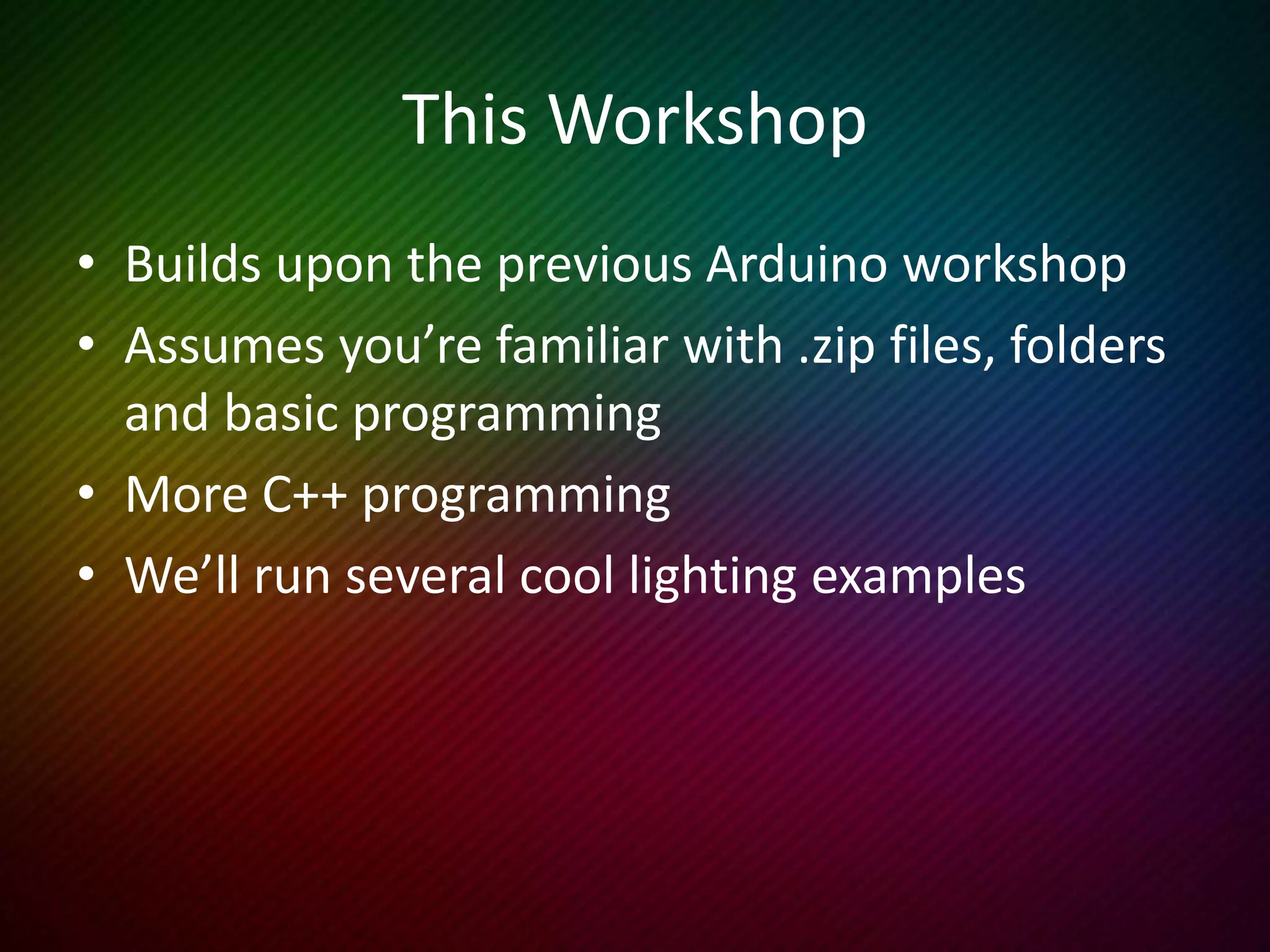
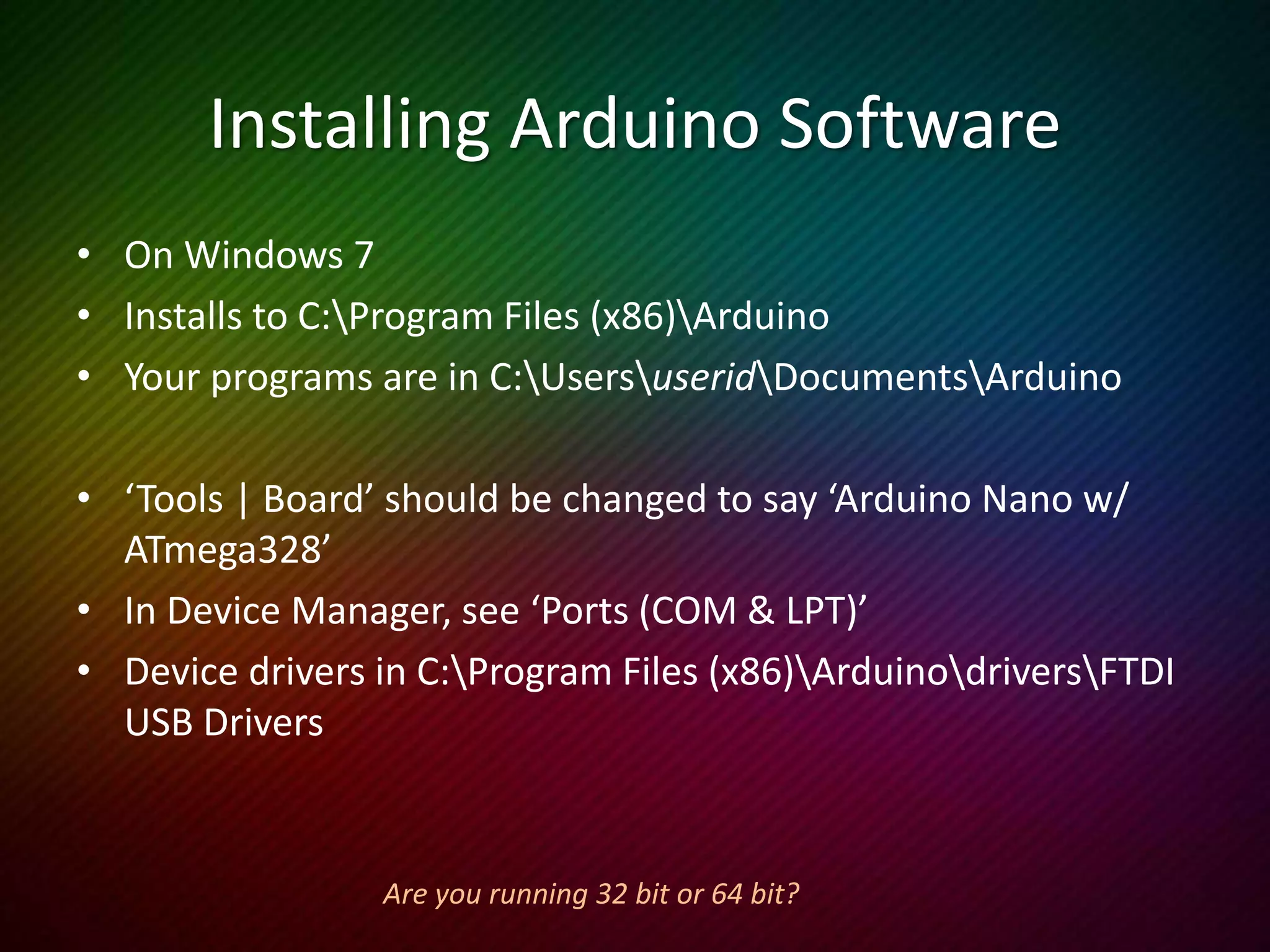
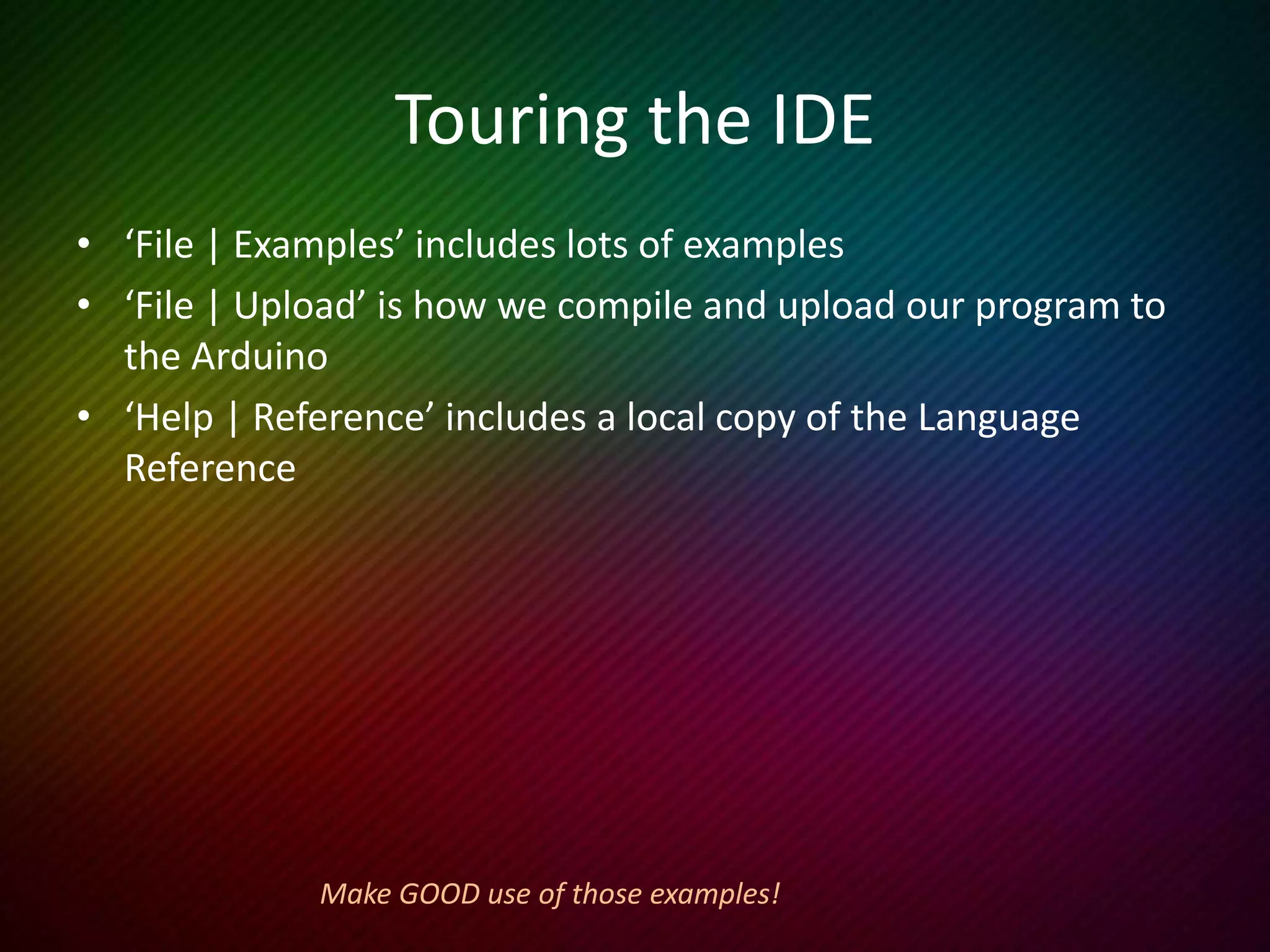
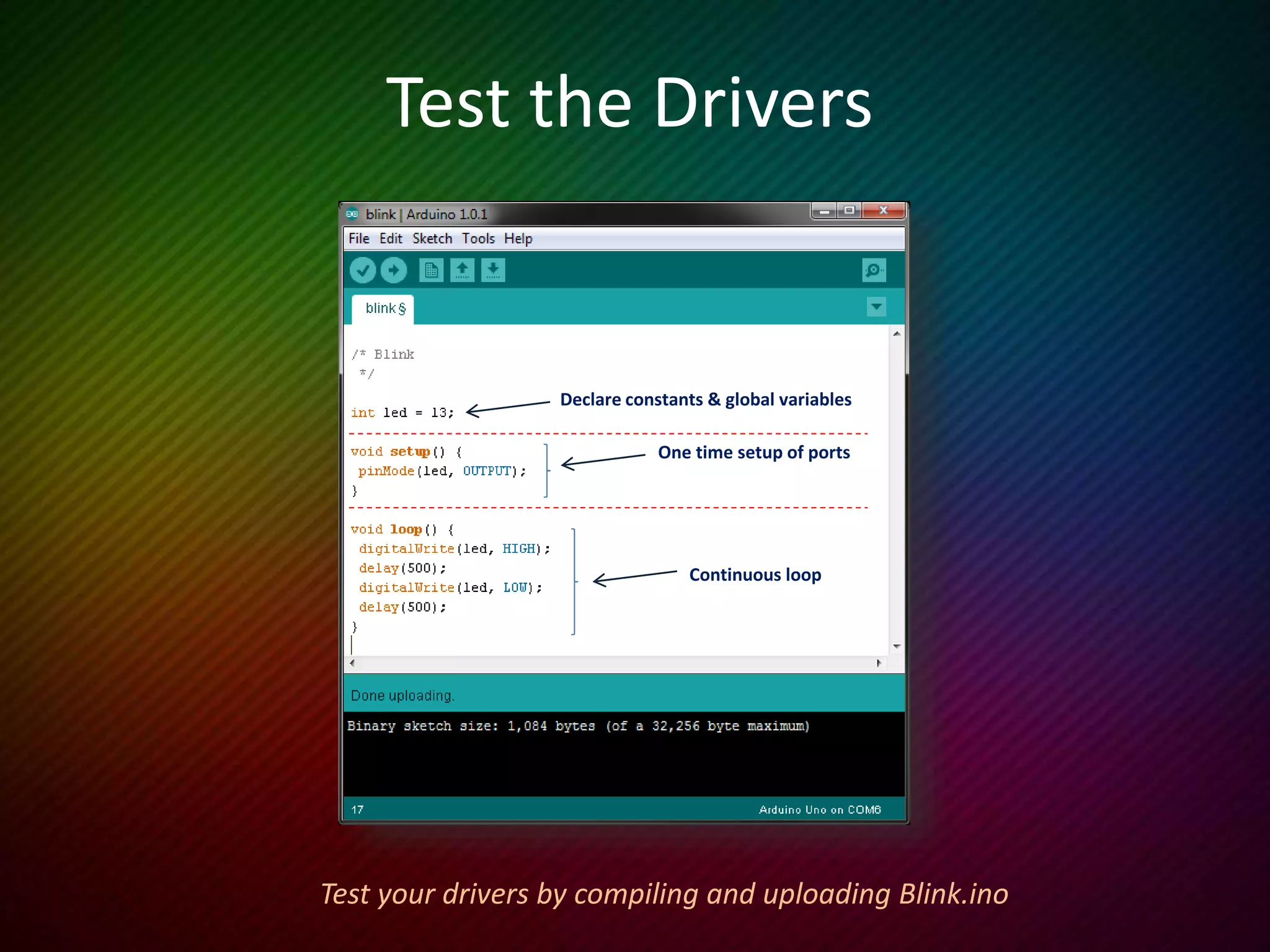
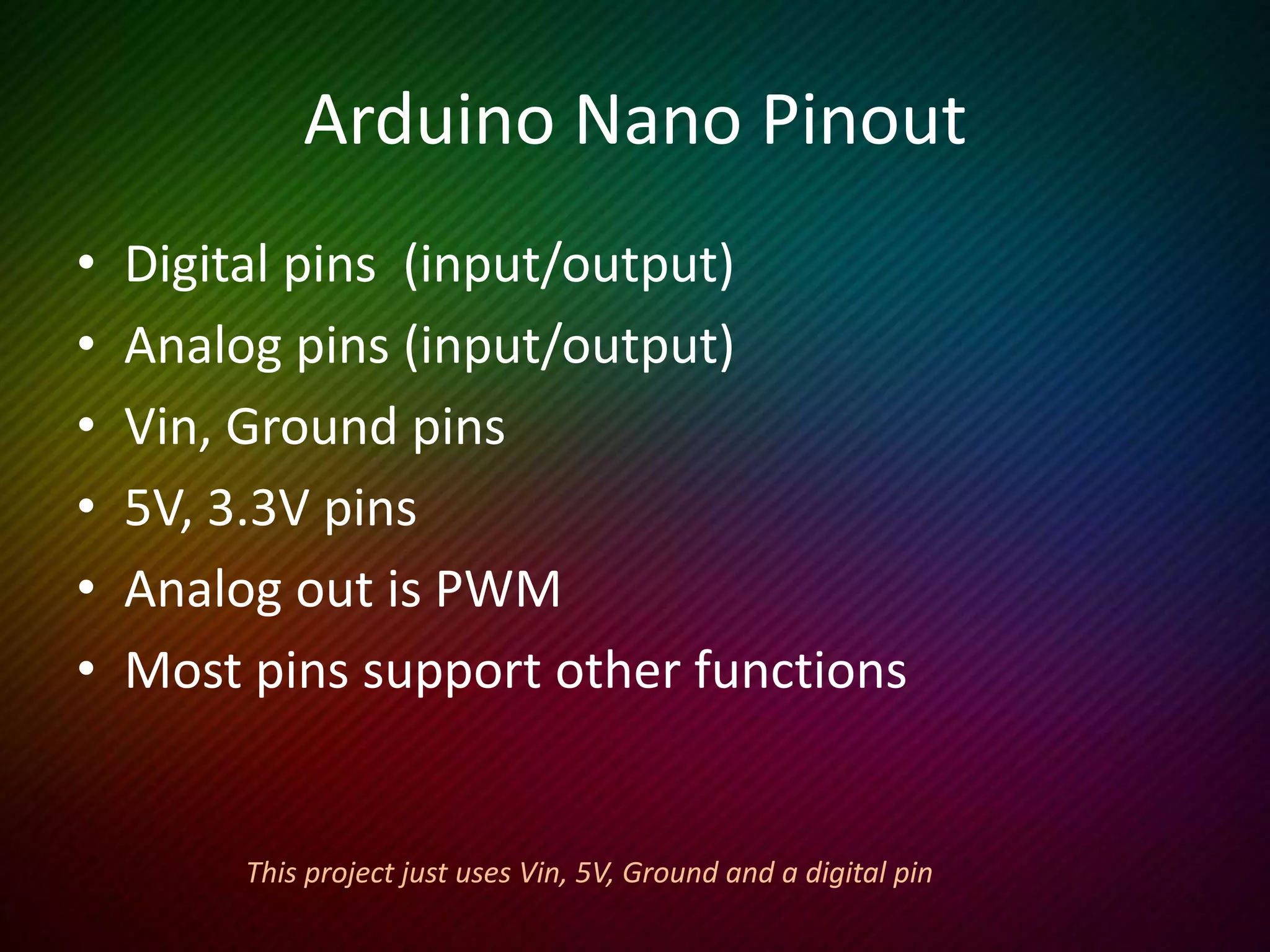
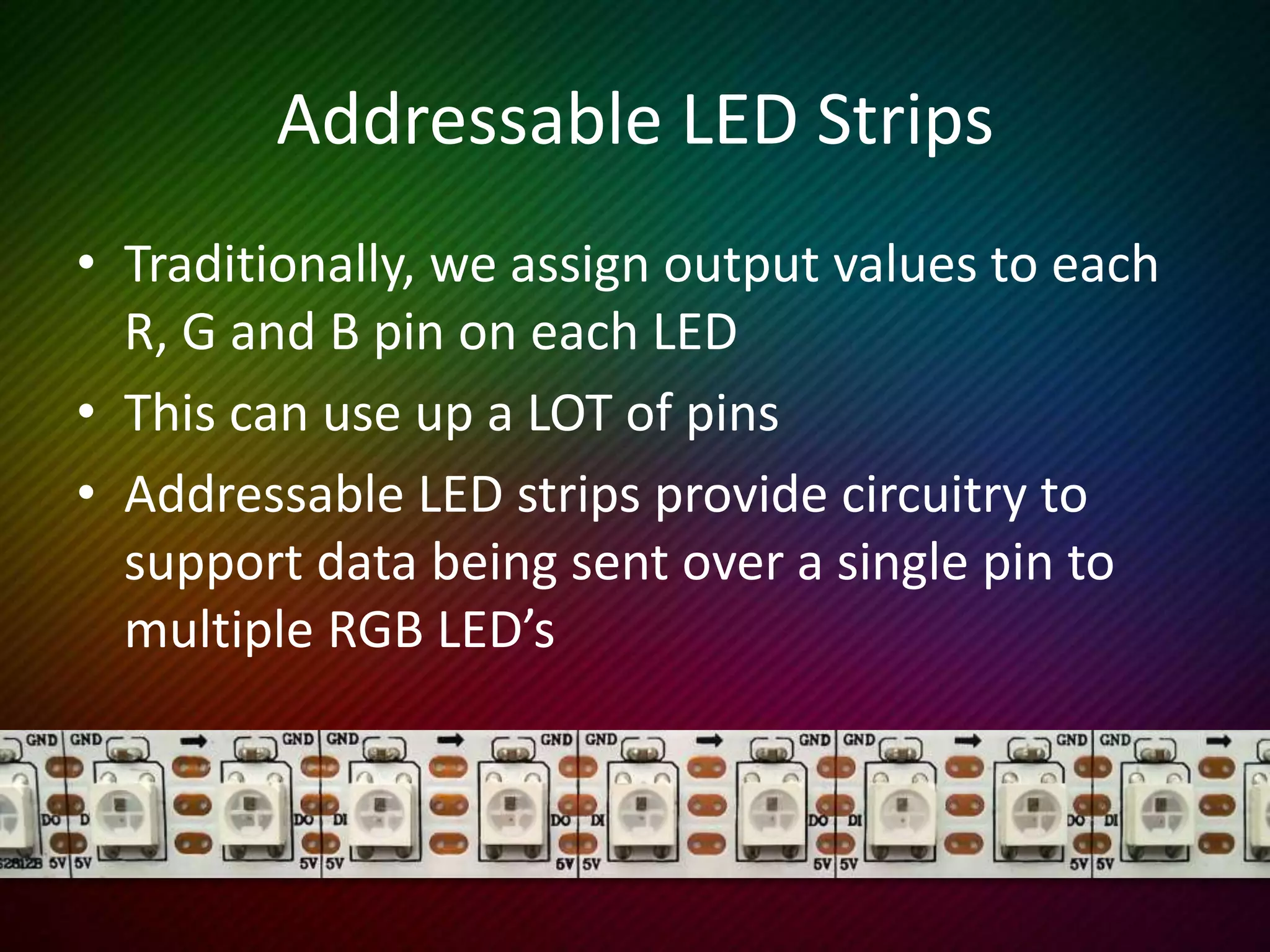
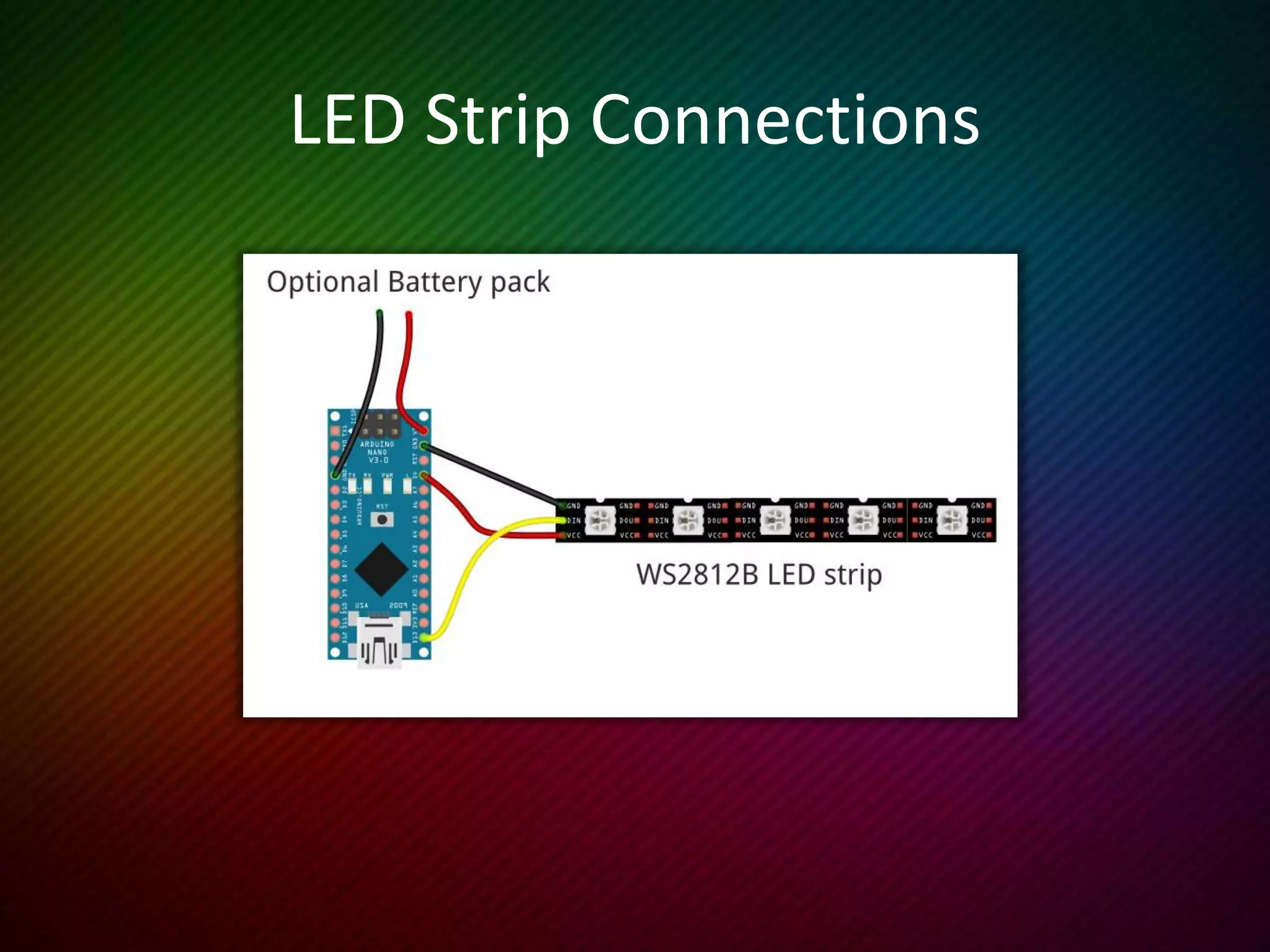
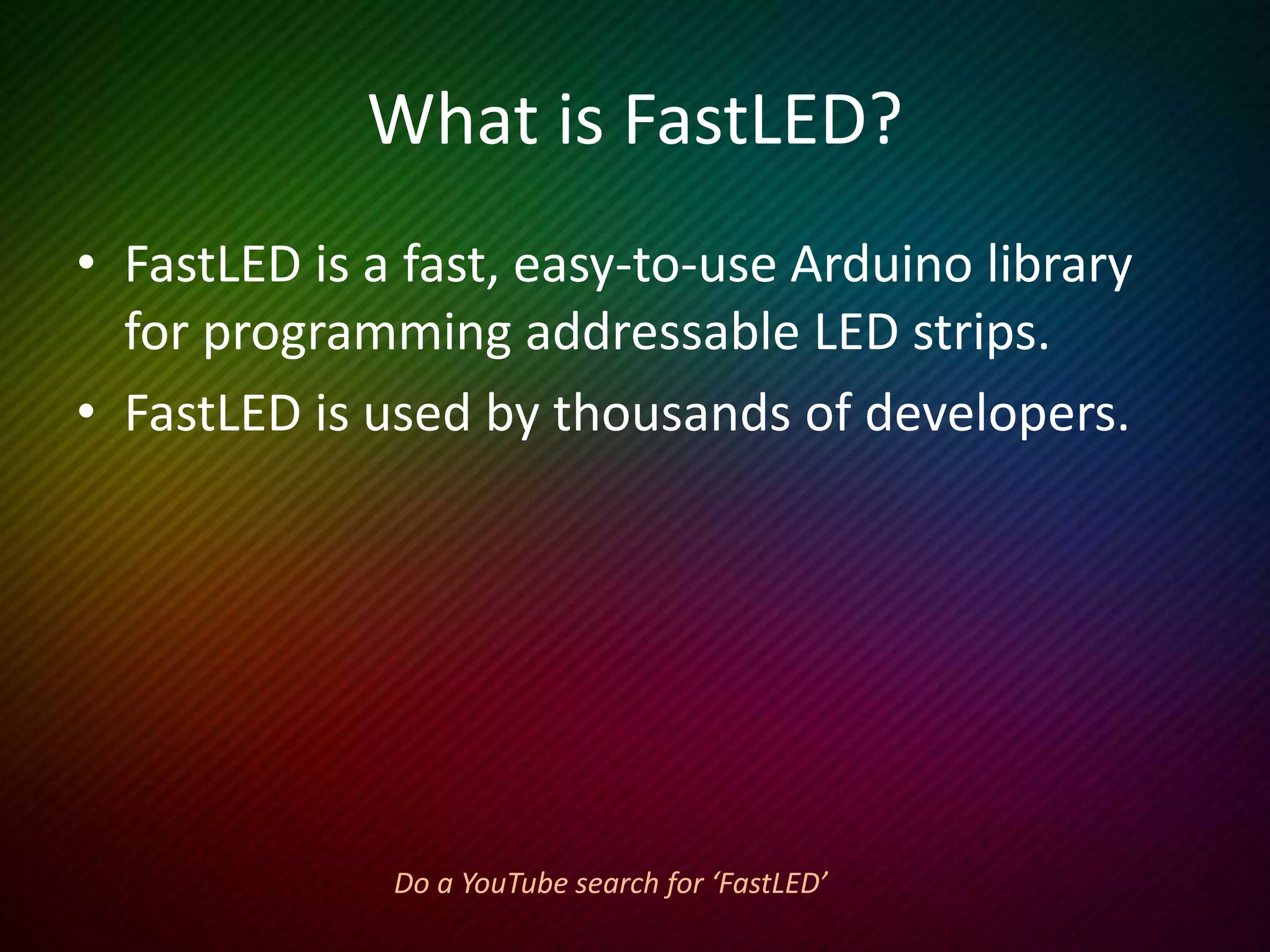
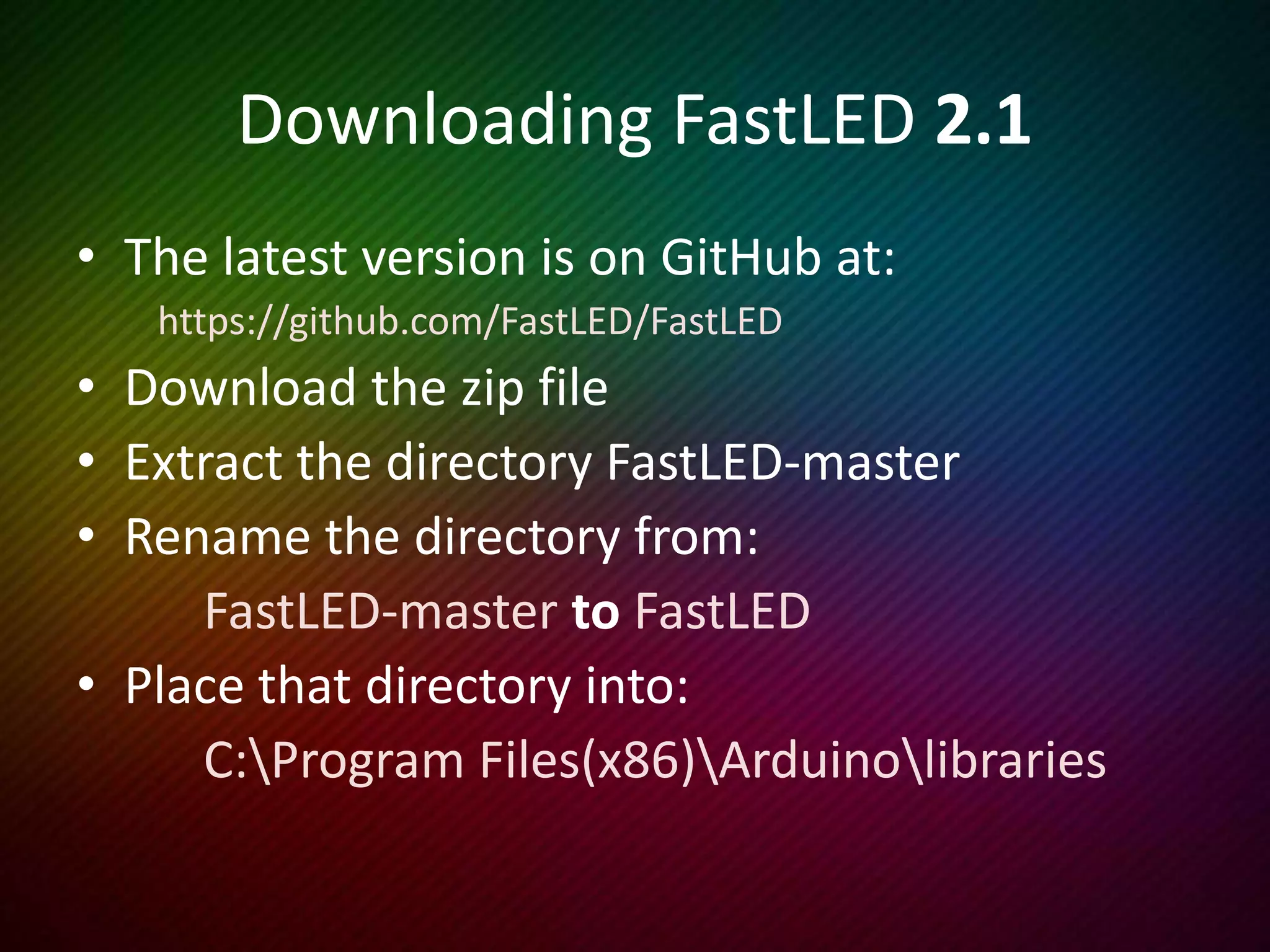
![FirstLight Code
#include "FastLED.h"
#define NUM_LEDS 20
#define DATA_PIN 12
#define CLOCK_PIN 11
uint8_t max_bright = 64;
CRGB leds[NUM_LEDS];
void setup() {
FastLED.addLeds<APA102, DATA_PIN, CLOCK_PIN, GRB>(leds, NUM_LEDS);
FastLED.setBrightness(max_bright);
}
void loop() {
for (int whiteLed = 0; whiteLed < NUM_LEDS; whiteLed++) {
leds[whiteLed] = CRGB::White;
FastLED.show();
delay(100);
leds[whiteLed] = CRGB::Black;
}
}
The white LED should march across the array. Try red!
// Include the library
// Number of LED’s
// Our data pin
// Our clock pin
// Define brightness limiter
// Define the LED array
// Run once
// Initialize the LED array
// Limit the brightness
// Run continuously
// Cycle through each LED in the array
// Set the current one white
// Show it
// Wait for a bit
// Set it to black](https://image.slidesharecdn.com/nano-141015233048-conversion-gate01/75/Programming-Addressable-LED-Strips-13-2048.jpg)
![Setting LED values
• leds[9] = CRGB::Cyan; // Web colours
• leds[9].g = 255; // Just set green
• leds[0] = CRGB(255,0,0); // CRGB values (red, green, blue)
• leds[0] = 0x0000ff; // Use a hex #
OR
• leds[9] = CSHV(hue, sat, bright); // Each goes up to 255
FastLED provides lots more ways to assign colours to LED’s](https://image.slidesharecdn.com/nano-141015233048-conversion-gate01/75/Programming-Addressable-LED-Strips-14-2048.jpg)
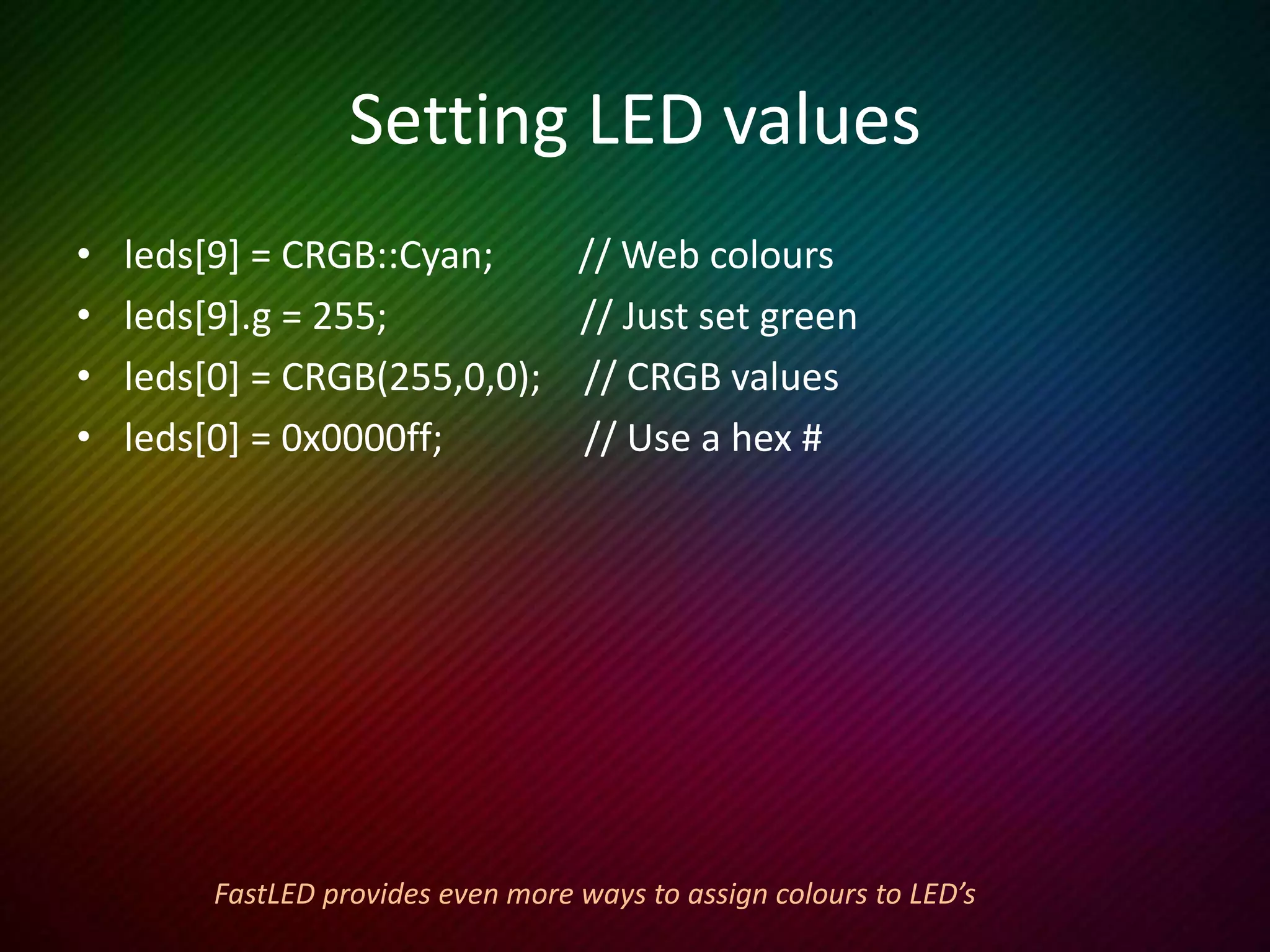
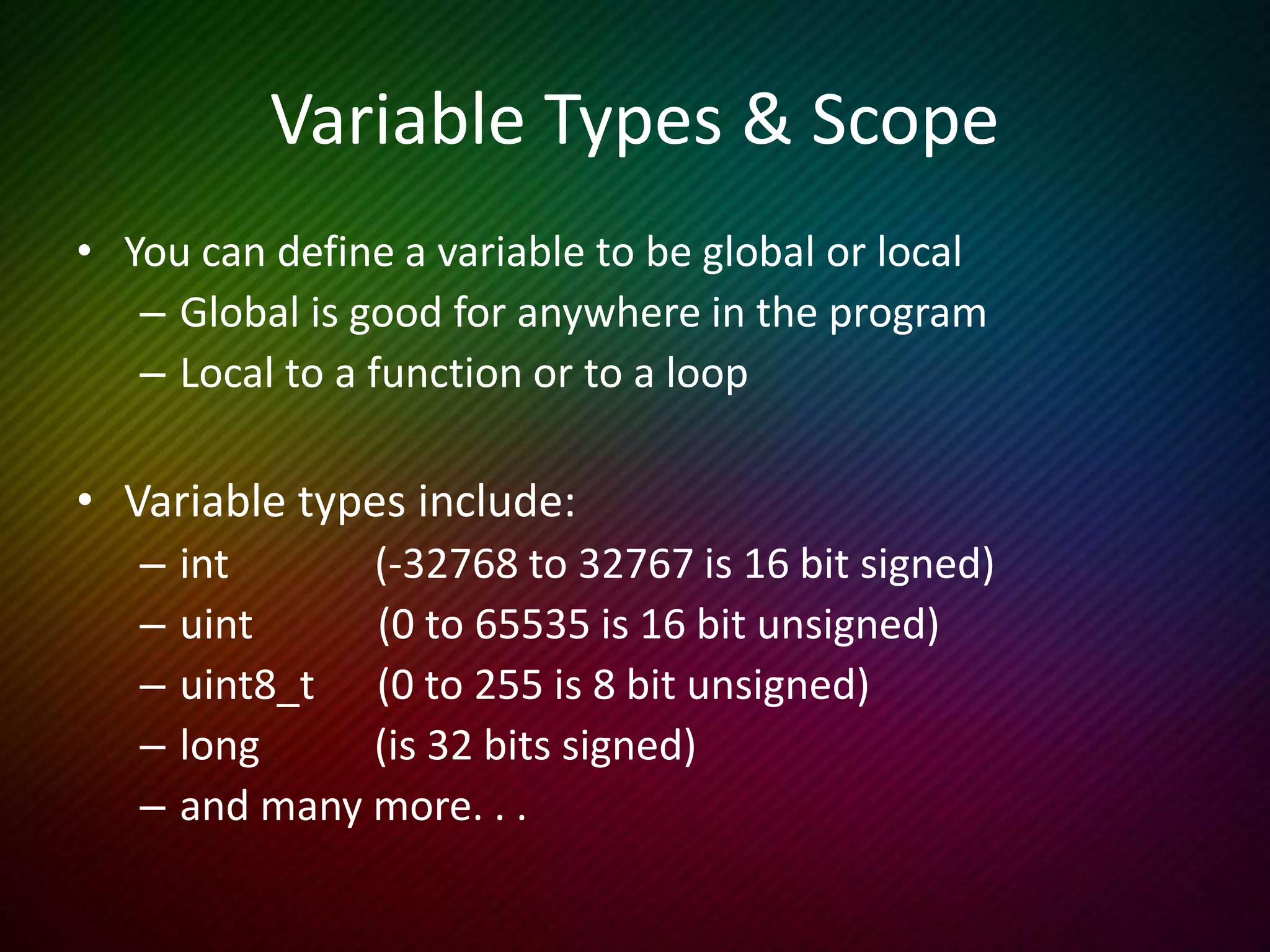
![If Statements
This example occasionally flashes a random colour on a random LED.
void loop() {
uint8_t j = random16(0, 100); // Which LED will we light up
if ( j < NUM_LEDS ) { // Only display if that number IS in our array
leds[j] = random(); // 32 bit randomizer for colour
FastLED.show();
delay(100);
leds[j] = CRGB::Black; // Make that LED black again
}
}](https://image.slidesharecdn.com/nano-141015233048-conversion-gate01/75/Programming-Addressable-LED-Strips-17-2048.jpg)
![For Loops
This example sets each LED a different colour, waits 2 seconds and repeats.
void loop() {
for (int i = 0; i < NUM_LEDS; i++) { // Last element is leds[NUM_LEDS-1]
leds[i] = random(); // A 32 bit random number
}
FastLED.show();
delay(2000);
}](https://image.slidesharecdn.com/nano-141015233048-conversion-gate01/75/Programming-Addressable-LED-Strips-18-2048.jpg)
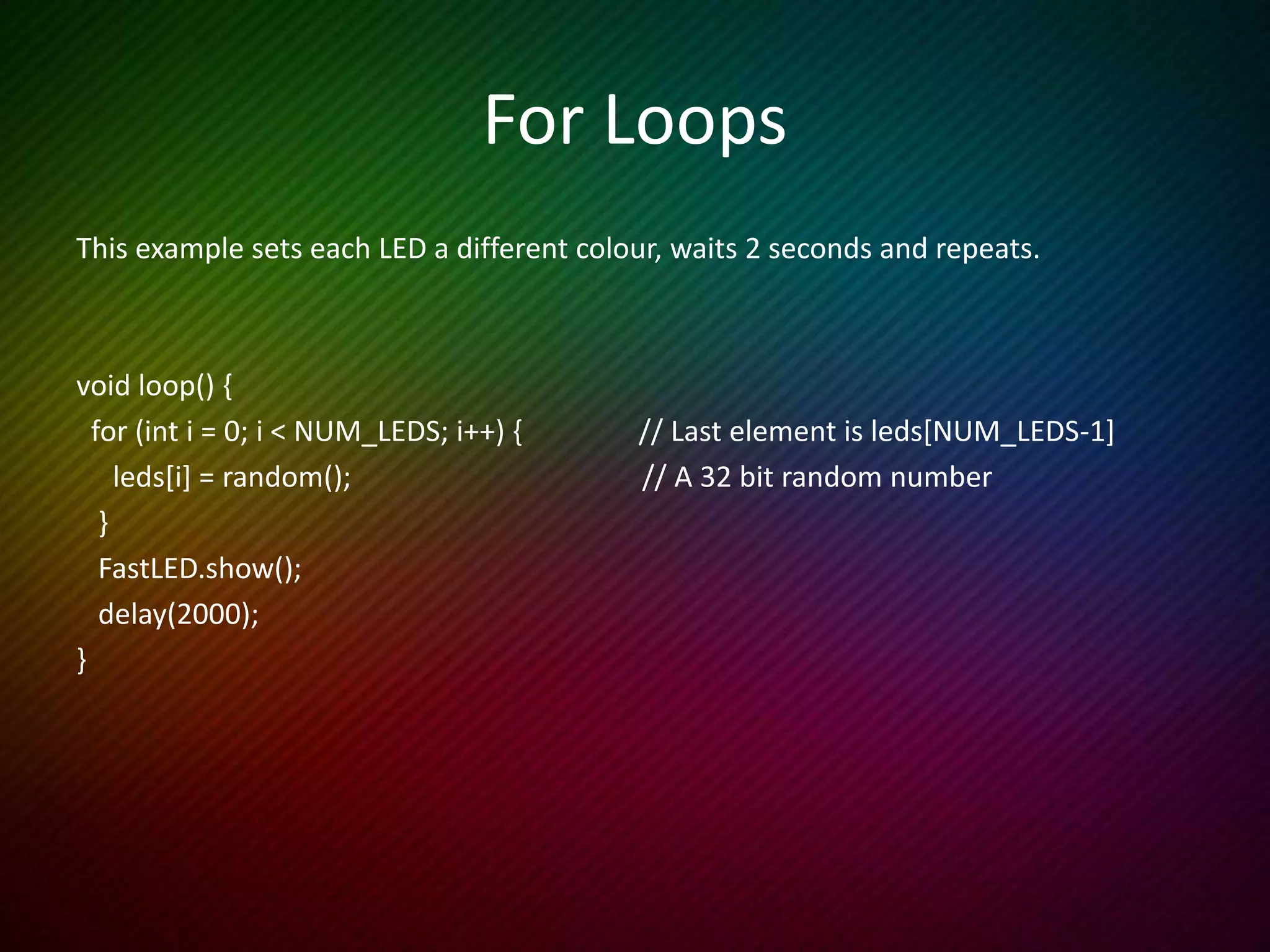
![Rainbow March
#include "FastLED.h"
#define LED_DT 12 // Data pin
#define LED_CK 11 // Clock pin
#define NUM_LEDS 20 // Number of LED's
#define COLOR_ORDER GRB // Change the order as necessary
#define LED_TYPE APA102 // What kind of strip are you using?
uint8_t max_bright = 64; // How bright do we want to go
struct CRGB leds[NUM_LEDS]; // Initialize our array
uint8_t thisdelay = 8; // A delay value for the sequence
uint8_t thishue; // Starting hue value.
uint8_t deltahue = 5; // Difference in hue between LED’s
Use variables where possible](https://image.slidesharecdn.com/nano-141015233048-conversion-gate01/75/Programming-Addressable-LED-Strips-20-2048.jpg)
